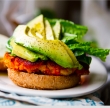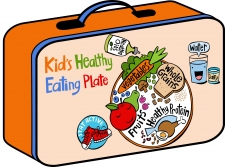If you open your lunch container and see leftovers or that sandwich you made last night, you’re not alone. More and more people are choosing to NOT spend money on sandwiches, soups and salads and are instead saving a few bucks by making their own lunch at home.
New data from the USA suggest that lunch traffic in QSR/fast-casual restaurant locations is slowing faster that it has in recent years - down seven percent in 2016 as compared to 2015 numbers.
Part of the reason is that more Americans are working from home than ever before (on at least 1-2 days each week) and lunch is either too expensive to eat out every day, or there is no dining option nearby.
For Many, The Cost of Lunch is the Biggest Factor
For those who simply can’t, or won’t, justify the cost of eating out for lunch every day, it comes down to a price-value relationship. For many, paying $10-$12 for lunch every day just doesn’t make economic sense. And the choice to “eat from home” is starting to show.
Fast-casual restaurants in the U.S. - which have experienced unbelievable growth for the past 15 years have seen nearly a double-digit (9%) slide in foot-traffic as the average bill for a lunch meal jumped to nearly $8.40USD.
This is big news in a country where lunch accounts for over one-third of all meals in restaurants. Lunch is also the top meal for eating out in the USA (sorry if you thought it was dinner) and it’s a time where diners want their meals to be good, fast, and cheap as they typically have little time to spend away from work.
Will the Restaurant Industry Suffer From This Trend? Maybe.
So how will this shift from positive percent growth during the recession to a major slide impact QSR and fast-casual establishments in the USA? Only time will tell. But one option that is becoming increasingly popular is QSR-branded meals and menu items for the home.
It’s very common now, in the USA and in other countries, to see your favorite QSR brands in the frozen-food aisle at the local grocery store with boxed appetizers, burgers, french fries and other items that can easily be bought - and “cooked” at home. Mostly, the “cooking” involves presetting your oven and heating for a certain amount of time.
This option is often far cheaper than the restaurant option, and you can bet that many fast-casual restaurants will be taking this route to ensure brand loyalty even when diners choose to eat their lunch and dinner from home.
Are you eating home-made food more often? Let us know in the comments!













